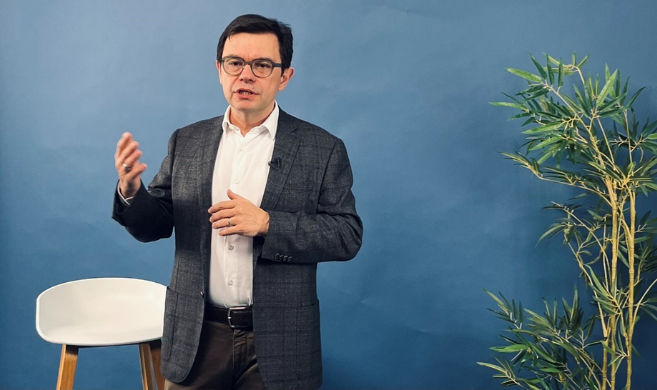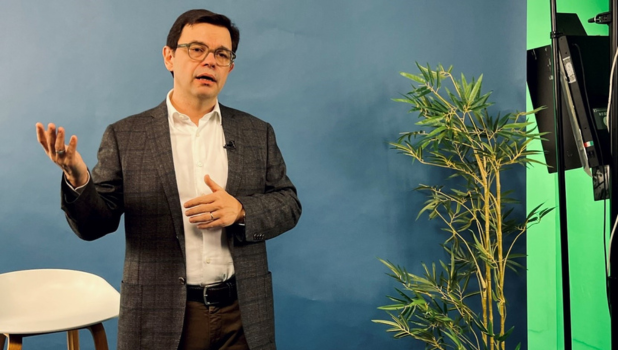Clarity and authenticity of your message
Corporate purpose has a slightly different definition to the one given to individual purpose or raison d’être. This is related to the authenticity of the company’s statement, as seen through the eyes of its employees. Workers have to believe it, see it materialize in front of their eyes, experience its implementation on a daily basis. Leaders have to share this purpose with teams from top to bottom of the organization, with clarity and authenticity. In this way employees become more actively engaged and more efficient in the everyday operations of the company. But let us be clear: purpose is not about making profits. It's for the firms that decide to reflect on their raison d’être or their reason for being, which goes beyond financial gain. And it’s not without a boomerang effect: not being authentic and true to the purpose generates hypocrisy, disengagement, and cynicism amongst company members. So, it’s better promise little, if anything at all, rather than to project grandiose and unrealistic goals.
It’s better promise little, if anything at all, rather than to project grandiose and unrealistic goals.
The challenge of incarnating your company’s raison d’être
Leaders at all levels of the company must embody purpose. This may seem obvious, but in practice it’s not. What we observe in our research is that at the senior and top management level, 80-90% actually know the firm’s purpose, they are able to articulate it, to explain it, to relate it to the history of the firm. But the more you go down in the hierarchy of the organization, the less the purpose is known, understood, and understandable. For instance, our research sample shows that between 60-80% of the employees don't know the purpose of their organization, despite the fact that it has been communicated. It just does not percolate down. Why is this so? It's very likely that the leaders at the top and mid-levels have not been penetrated by these values or resist them because they don't think that they are actually authentic, achievable, or manageable.
Our research shows that within firms, there is huge variation among employees in how much they know about their firm’s purpose
Purpose takes different forms in different companies
We’ve identified three levers needed to define a firm’s purpose. However, they are not homogenous and adopt different forms. For instance, the Veolia Company, has shared a long text, available to its employees and stakeholders that describes 18 indicators. In other words, performance at the corporate level is multidimensional. Veolia calls it “plural performance”. Other multinationals use a negation. For instance, in its first years Google defined purpose as “Don’t be evil.” Body Shop’s motto, meanwhile, was: “Enrich, not Exploit”. Here again, we have an example of negation. And, depending on what you have in your purpose definition, it will be more or less easy to activate. However, the more you have negation in your purpose, the more stringent are the obligation on employees and the firm. And the more obscure or vague you make your purpose, the more difficult it is for people to believe in it.
How do you reflect and align the company values?
There are three levels to consider. To begin with, there is an element of sacrifice we can’t ignore. If all leaders at all levels embody purpose, that means that the organization should mark certain actions in accordance with this purpose. That might well hurt business. Let's take the example of Lush, a cosmetic company that decided right from the get-go that they didn't want to have any animal testing for their products. This decision prevented them from entering some markets, especially major Asian markets. The same can be said about CVS Health a retail company which decided not to sell tobacco in their stores anymore because their purpose was to help people move towards better health. They were basically walking the talk and showing that purpose actually influences the way their organization works at all the different levels.
The second factor to work on is making purpose tangible and aspirational. That means that inside the organization, it’s worth setting up training courses and workshops where purpose is discussed to considerable length. Linked to this is seeing different leaders embody purpose, making purpose tangible in their everyday actions. What we observe is that it’s good to have a philosophy of the Self and a philosophy of action which rely on a degree of autonomy. This implies that leaders need to take the risk of granting their team members a form of freedom. And having a purpose makes you more at ease with this idea and not seeing the other as someone that will shirk or will cut corners or not do things right. This implies a philosophy and confidence in oneself as a leader and teammate. But leaders need to feel protected by the firm’s organizational culture. Offering more autonomy means there are more risks. They will undoubtedly reap benefits, however, because there will be more innovative, more committed team members, coming up with new ideas and new solutions. Nevertheless, there is the probability of mistakes or mishaps. At Best Buy, Hubert Joly introduced this idea of each employee developing one project or one idea per year, but for which they need not be held responsible if it were a failure, or did not work right. They were encouraged to try new things out. It’s important to believe that the autonomy given to decision makers provides benefits not just for them and their growth as entrepreneurs, as leaders, but also in terms of benefiting the company.
To achieve a company’s purpose is about involving everyone in the firm.
As part of this factor is the kind of feedback leaders are giving. Purpose also means giving more feedback in order to reorient, help guide the team member in their next steps. A culture of feedback is also a very good indicator of how the team members are maturing in their journey towards a purpose-based organization. What kind of feedback do leaders give? Positive? Passive aggressive? Or pointing out mistakes more than the good things being done? All these things can be worked towards making purpose tangible and aspirational, and not just a label on some commercial documents.
The third level deals with recognition and incentives. It's vital to include this factor, it brings alive the organization and helps it develop and thrive. There are different ways of doing this, and it needs multiple communication policies around this. Lush, for instance, has quite an exceptional multichannel approach. Or, a salesforce that spotlights trailblazer stories of employees that tout the merits of their solutions.
To achieve a company’s purpose is not just about involving the top of the company, its executives and leaders, but it's everyone in the firm, those who face the customers, those who are behind strategies, those who manage small units. Everyone.
Conclusion
A company needs to reward people in an appropriate manner. Acknowledging the merits of a genuine and authentic initiative can nourish their own intrinsic motivation but financially compensating for the same initiative could backfire. Hence, to strike the right balance between symbolic and monetary incentives is an art. It orients the organization towards the objectives that are aligned with the purpose..
Overall, an indirect effect of all these policies and practices is that firms’ financial performance will increase. Profit is thus an indirect positive consequence of a well-managed purpose-based leadership. This is what we find in the research that we are conducting at the Purpose Center at HEC Paris.
Watch the RESKILL Masterclass on YouTube:
*How Leaders Can Create a Purpose-Driven Culture, a research-based opinion from Rodolphe Durand and London Business School Professor Ioannis Ioannou on the Harvard Business Review (November 2023).
Learn more:
The Purpose Day 2024 on March 5, by the S&O’s Purpose Center in collaboration with the Oxford University Center for Corporate Reputation at the Hôtel de l'Industrie, Paris (watch the HEC Purpose Day 2023)
"Purposeful Governance": the New HEC and Mazars Chair with Professor Luc Paugam at the Purpose Center.
The Purpose Certificate: "Strategy for Impact".









